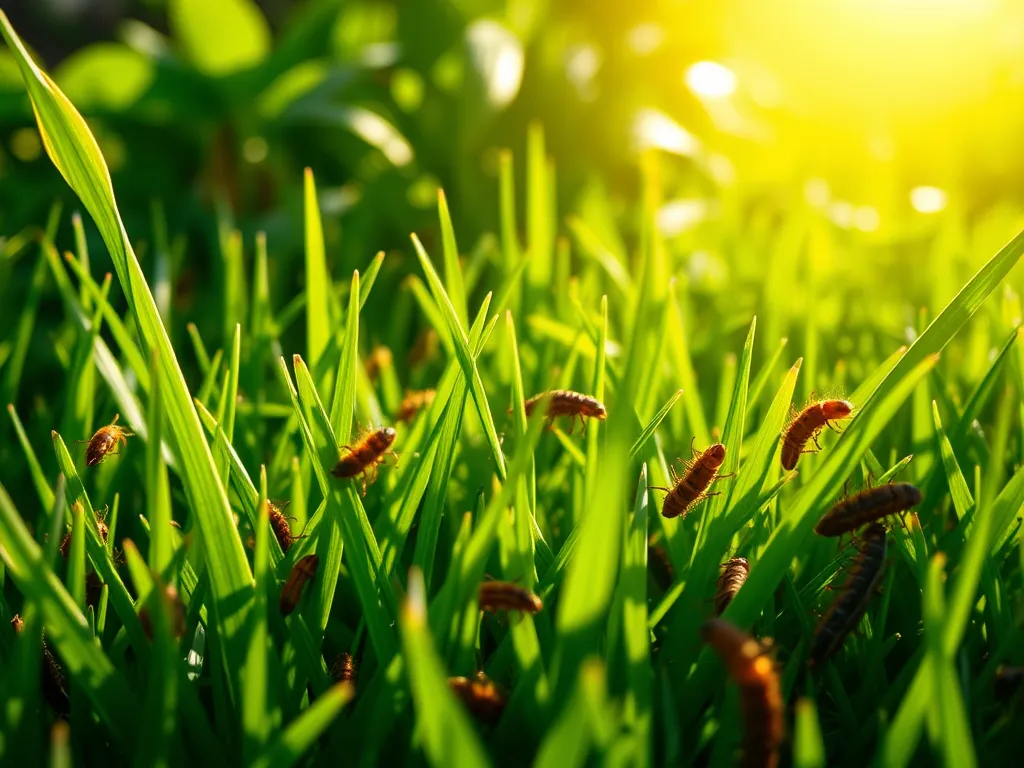Essential Guide to Identifying Phoenix Lawn Pests

Phoenix Lawn Pests: Identification, Treatment, and Prevention
Phoenix Lawn Pests can pose a significant challenge for homeowners striving to maintain a lush and healthy lawn. The diverse climate in Phoenix creates an environment that is conducive to various pests, making it crucial for residents to be aware of the common pests that can invade their lawns.
Understanding Phoenix Lawn Pests and their behaviors is essential for effective management. From the heat-tolerant Bermuda grass mite to the invasive chinch bugs, recognizing the signs of their activity can save homeowners time, effort, and money in lawn maintenance.
Effective treatment of Phoenix Lawn Pests is vital in preserving lawn health and aesthetics. With a range of options from organic methods to chemical treatments, homeowners have several strategies at their disposal. Choosing the right approach requires understanding the specific pest and its impact on the turf.
For a healthy lawn, proper lawn insect identification is crucial.
Prevention is the most effective strategy in managing Phoenix Lawn Pests. By implementing best practices in lawn maintenance, selecting appropriate grass species, and understanding landscape design principles, homeowners can significantly reduce the risk of pest infestations in their lawns.
Finally, maintaining an overall healthy lawn ecosystem involves recognizing the role of beneficial insects and soil health in pest management. A balanced approach to lawn care not only minimizes pest problems but also enhances the aesthetic and environmental quality of the landscape.
Identifying Lawn Pests
Common types of lawn pests in Phoenix include the Bermuda grass mite, St. Augustinegrass chinch bug, and sod webworms. Each pest has its unique identification markers, such as specific damage patterns on the turf, which can help homeowners diagnose problems quickly.
Discovering effective pest control methods can transform your garden's health.
Signs of lawn pest infestations may include yellowing grass, unusual bare spots, or an increase in insect activity. Homeowners should regularly inspect their lawns for these signs and take action at the first indication of a problem.
Incorporating natural pest deterrents into your garden can significantly reduce unwanted pests.
Pest activity can vary according to seasonal changes. For example, warmer months often see a spike in pests like chinch bugs, while cooler periods may see increased activity from grubs. Awareness of these patterns can help homeowners anticipate and manage pest outbreaks.
The impact of pests on lawn health can be severe, leading to deterioration of grass quality, increased susceptibility to diseases, and reduced aesthetic appeal. Homeowners should understand the specific risks associated with different pests to prioritize their pest management efforts.
Using traps for pest identification can be remarkably effective for monitoring populations and determining the right treatment methods. Simple DIY traps can help in assessing the levels of infestations before they get out of hand.
Treating Lawn Pests
Organic methods for pest control involve the use of natural substances and techniques to deter pests without harming beneficial insects. Products like neem oil or insecticidal soaps can be effective against a variety of lawn pests and are safer for the environment.
Chemical treatments can provide rapid results but come with pros and cons. While they may effectively eliminate pests, there are concerns regarding environmental impact and the potential harm to beneficial insects. Homeowners should weigh these factors when selecting treatment options.
Integrated Pest Management (IPM) strategies combine various pest control methods tailored to specific lawn conditions and pest profiles. IPM often leads to more sustainable pest management by minimizing chemical inputs while maximizing effectiveness.
Timing your treatments effectively is crucial. Homeowners should apply treatments during peak pest activity to ensure maximum impact. This may require monitoring lawn conditions and pest development closely throughout the growing season.
Post-treatment lawn care tips include proper watering and fertilization to aid recovery and bolster defenses against future infestations. Cultivating a healthy lawn post-treatment is essential for ongoing pest protection.
Preventing Lawn Pest Infestations
Best practices for lawn maintenance include proper mowing, watering, and fertilization schedules. Regular maintenance reduces stress on the lawn, making it less susceptible to pests.
Choosing pest-resistant grass species can provide a natural defense against pest infestations. Homeowners in Phoenix should look for grass types suited to the local climate that demonstrate resilience against common pests.
Using landscape design to deter pests includes strategic placement of plants and hardscapes that create barriers. Incorporating plants that repel pests can also enhance overall lawn health.
Seasonal preventative measures can significantly decrease pest risks. Implementing early treatments and monitoring closely during peak seasons for pest activity is key for prevention.
Educating homeowners on pest prevention techniques is crucial. Sharing knowledge about lawn health and pest control strategies can empower communities to work together in managing and preventing infestations effectively.
Specific Lawn Pests in Phoenix
Identifying the Bermuda grass mite involves looking for signs of stippling on grass blades, which may indicate feeding damage. This tiny pest can cause significant stress to Bermuda grass, making early detection critical.
Managing the St. Augustinegrass chinch bug requires vigilance, as these pests can quickly devastate grass. Regular monitoring and treatment options like insecticidal soaps are necessary to control their populations effectively.
Recognizing and treating sod webworms involves looking for irregular patches of dead grass. Prompt action can prevent them from causing widespread damage across the lawn.
Understanding the role of grubs in lawn health is essential, as they can weaken grass roots and lead to die-off. Treating grubs early helps maintain lawn integrity and visual appeal.
Addressing fire ant infestations effectively may require targeted treatments. Fire ants can not only damage lawns but also create a nuisance for homeowners and pets alike, making them a priority pest.
Lawn Health and Ecosystem Balance
The role of beneficial insects in lawn care cannot be overstated. Ladybugs, lacewings, and other beneficial insects can help control pest populations naturally, reducing reliance on chemical interventions.
Maintaining soil health to prevent pests involves regular testing and amendments to ensure optimal conditions for grass growth. Healthy soil supports a robust lawn, making it more resistant to pest attacks.
Understanding the ecosystem dynamics of a lawn garden is crucial for long-term management. Recognizing how different components interact helps in creating an environment less conducive to pest infestations.
The impact of overwatering on pest populations can lead to problems such as root rot and increased susceptibility to grubs. Proper irrigation practices are essential for maintaining lawn health.
Bringing wildlife into your lawn care strategy involves encouraging predatory insects and birds that can naturally control pest populations, thus creating a balanced ecosystem that benefits both the lawn and local wildlife.
